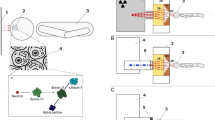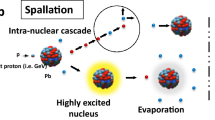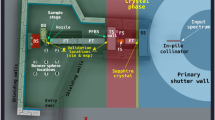Abstract
UP to the present, all neutron diffraction studies in Great Britain and practically all structural studies elsewhere have been carried out with neutron beams from reactors which have a peak flux of a few times 1012 neutrons per sq. cm. per sec.; for example, at Harwell the reactor Bepo has been used for this work. We have now made preliminary measurements with a spectrometer at the research reactor Dido, where a peak unperturbed flux of about 5 × 1013 neutrons per sq. cm. per sec. is available. We achieve in practice an increase of about twenty times the intensity of our neutron beam, and this increase is available for reducing proportionately the size of the sample for study. The advantage of this, for solidstate studies with neutron beams, can be seen in two ways.
This is a preview of subscription content, access via your institution
Access options
Subscribe to this journal
Receive 51 print issues and online access
$199.00 per year
only $3.90 per issue
Buy this article
- Purchase on SpringerLink
- Instant access to full article PDF
Prices may be subject to local taxes which are calculated during checkout
Similar content being viewed by others
Author information
Authors and Affiliations
Rights and permissions
About this article
Cite this article
BACON, G., DYER, R. Neutron Diffraction at a High-Flux Reactor. Nature 183, 35 (1959). https://doi.org/10.1038/183035a0
Issue date:
DOI: https://doi.org/10.1038/183035a0



